
We have had lots of heavy-duty technical posts and chapters lately, so I thought it was time to lighten things up a bit with one of my This and That posts. Lots of pictures, not much text, should give all our brains a rest. And if your brain doesn’t need the break, mine sure does!
That said, I’m hard at work on at least one chapter, and probably two, of running rigging recommendations, Part 3 of Aluminum Boat Care Tips is with my editor, and two docking posts are perking, so not to worry, I’m not goofing off.
Joys of a Freezer
Let’s start with the shot above, which I took about six weeks into our cruise when we were in the wilds of Labrador. There’s no question that having a big freezer is in many ways a pain in the neck, particularly since it pretty much forces us into having a generator, but the pay off is having really great food, even in remote places.
The lamb leg came from our farmer’s market here in Lunenburg and it fed us for at least six meals: the big dinner shown in the shot, at least two dinner curries, lunch sandwiches when hiking, and tomato soup with lamb chunks for another lunch.
And another nice thing about our freezer is that the cooked lamb went back in, so we were not faced with eating lamb morning, noon and night to finish it before it went bad.
Also, the peas are frozen rather than tinned—we will eat tinned peas if we must, but neither of us like them much.
Anyway, I’m not trying to sell anyone on a big freezer, things are certainly simpler without one, but to these two food-obsessed yachties, who spend a lot of time in places where sourcing good food is hard, our freezer is well worth the agro. That said, we have a chapter on how to eat well without a freezer, or even refrigeration.
Dry Towels

Funny the little things that we don’t find out about until we live on a boat full-time. One of them is the difficulty of keeping towels fresh when laundries are few and far between. And the horror of living with towels that have not been really dry in two weeks, and then actually having to rub said damp and pungent rags over our bodies, needs to be experienced to be believed.
Of course, those who cruise in sunny places don’t need to worry about this. An hour or so in bright sunshine on the lifelines every day and towels are usable for a long time…a scary long time—hey, we’re cruisers…but up here in the foggy and chilly north, not so much.
So we were both ecstatic to find that a couple of hours in our new cockpit enclosure, all buttoned up to create a greenhouse, does the same fresh-up job, even on days with only brief flashes of sunshine.
I know it seems trivial, but ain’t it nice when the law of unintended consequences actually works for us, instead of biting us on the ass as it usually does when cruising.
Useful Tool
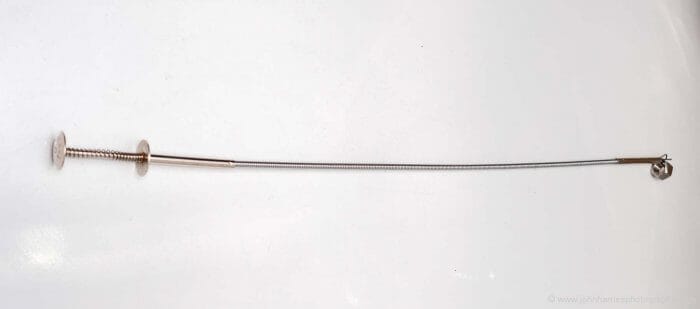
As those of you who have been reading here for a while know, I’m a tool freak. Now you know why we have a 56-foot boat: any smaller and she would have long sunk under the load of my collection. (Actually, I’m kidding; in fact, we work hard at keeping our boat relatively light and particularly at keeping weight out of the ends.)
Anyway, ever drop something just out of reach? (Anyone who says no to that question doesn’t own a boat.) When that happens, this grabber device is what you need. Also great for working a machine screw, bolt, or nut into an impossibly tight place. I can’t tell you the amount of problems this gadget has saved me. You can get them at McMaster-Carr and they are only US$8. Every cruiser should have one.
Don’t Freeze
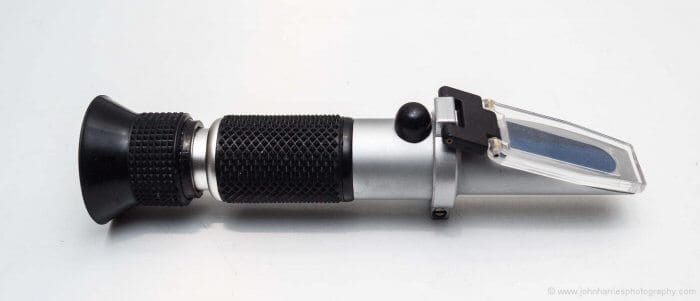
Have you ever been winterizing your boat and wondering if the antifreeze coming out of the spigot is pink enough? Maybe it got diluted with water in the line, and maybe not. Finding out in the spring when you pressurize the system and hear the distressing sound of running water from a burst pipe is a lousy way to find out that it was not pink enough.
And how about after we change the antifreeze in our main engines? Did we get the mix strong enough? How about dilution by fresh water that might be lurking in a low point in the system, maybe the water heater exchange circuit?
For years I guessed this stuff, admittedly without any disasters, but I probably wasted a bunch of antifreeze by running it through way longer than needed.
Now I know for sure with this Refractometer. Not cheap at US$50.00, but then again a lot cheaper than a cracked engine manifold or even a burst pipe. And, anyway, like I said, I’m a tool freak.
Keep It Dry
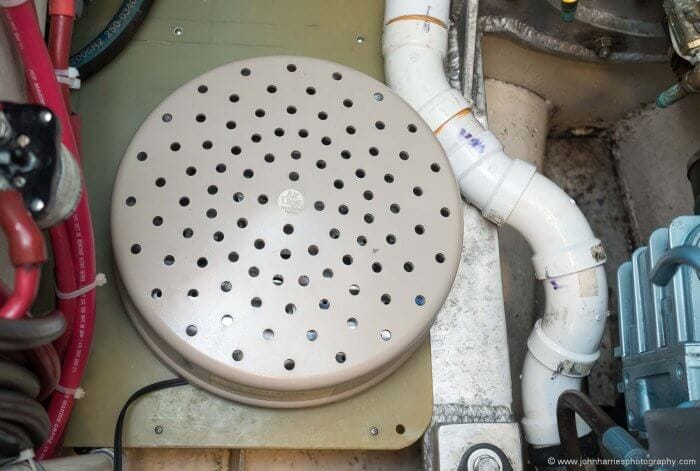
Talking of stuff that makes winter layups go better, we have pretty nasty freeze-thaw cycles here in Nova Scotia, and they in turn cause condensation, and that breeds mildew. So last winter we installed two of these little air circulation heaters from Davis Instruments, one forward and one aft.
They did such a great job of keeping the air moving and the boat dry that this winter we have added another in the engine room. Highly recommended for layups in winter climates like ours.
Good Bye, Old Friend
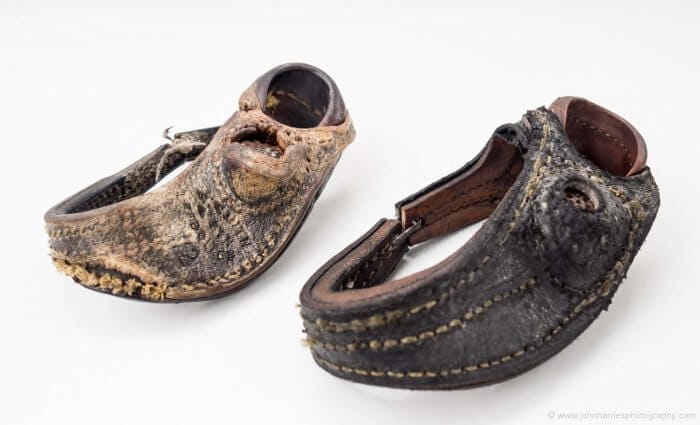
I have mentioned how having a real sailmaker’s palm, not one of the toys that marine stores sell, makes hand-sewing jobs easier and the results better. The one on the left is my old palm that I bought and fitted to my hand—soak in water for two hours, mould to your hand, and then let dry—some 45 years ago, when I first started sailmaking.
For years it’s been looking pretty worn and sad, but I refused to discard it, even though Phyllis bought me a replacement at least 10 years ago. Finally this summer I realized that by continuing to use it I was risking driving the back end of a needle into my hand if the rusting and loose cup failed, so it had to go.
Amazing how we, or at least I, get attached to great tools that have served us well…but then I’m a tool freak.
Reminder

We use a bunch of apps and programs on computers and iPhone—must write a post on that—to keep track of all the vital details that go into having safe and fun cruises, but sometimes simple old stickies are the best thing.
This one is reminding us to check the wire seizing on the anchor shackle for wear when we weigh anchor—talk about an important detail. Since I always open the compass cover as we get underway, no way to miss it. Every cruising boat should have a couple of pads of stickies close to hand.
Hatch Gasket Maintenance
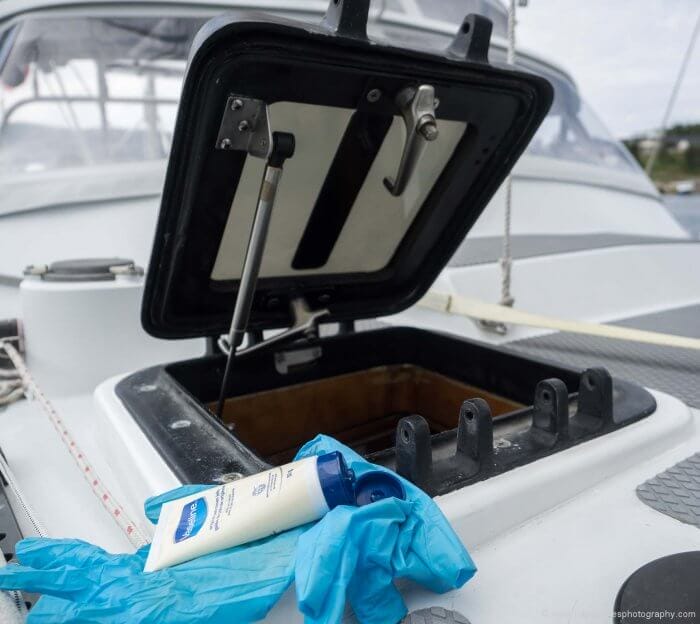
Morgan’s Cloud is fitted with these massive hatches that the builder constructed from scratch. They pretty much never leak, but part of the secret to that is keeping the gaskets moist with a very thin film of petroleum jelly (Vaseline). We only need to coat the gaskets once every couple of years, but it’s amazing what a difference this simple step makes.
Our gaskets are made from neoprene—works well since over time it forms to the raised mating surface on the hatch bezel. The Vaseline doesn’t bother this material at all, and in fact seems to actually extend the neoprene’s life, but if you have gaskets made from other materials, particularly natural rubber (rare, I think), this trick might not be a good idea.
Black and White
I usually end these posts with a couple of photographs just because I like them, and this post is no exception.
Lately I have been looking for compositions that work well in black and white, probably as a reaction to the tsunami of over-saturated colour photos that we are all being subjected to these days.
Also, I find that when I get rid of colour, composition becomes the important contributor to a pleasing photo—colour can be a crutch.
Here are two from this summer I particularly like.
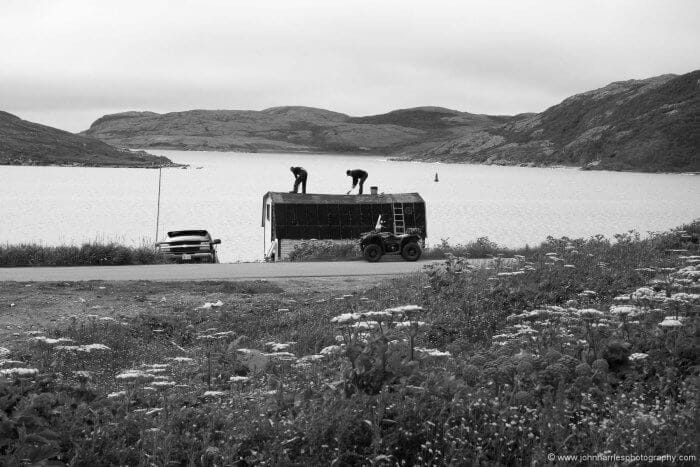
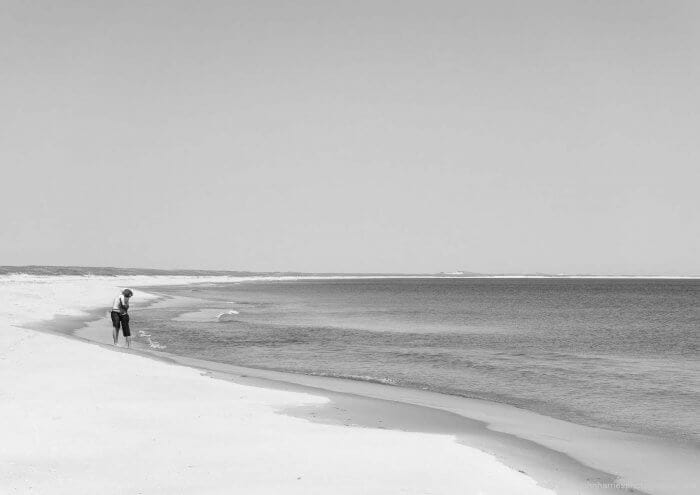
Comments
Do you have any favourite, but a bit out of the ordinary, tools? Please leave a comment.


How many amps does your refrigeration draw? How many hours and how often do you run your generator? And I guess while I’m asking, what do you have for house batteries? Thanks. G
Hi Glen,
Battery size and generator run times are not really relevant here, since there are many other variables that can influence those.
The numbers you need to know is our freezer holds something in the order of 15 cubic feet (I’m guessing here) and it takes about 100 amp hours at 12 volts (1200 watts) a day to keep it frozen in cool climates and a bit more in hot.
That said, our freezer is very well insulted and the unit is an extremely efficient holding plate system that only needs to be run a little over an hour a day for the freezer. Continues running evaporator systems may need more amps a day, but there are a lot of variables that will influence that.
All of that said, the key point is that with a freezer this big you need some sort of generation capacity, solar (unless huge) and wind won’t keep up.
You wrote that having a big freezer forces you to use a generator. I have a big freezer and a generator but I no longer use it! For the last 2 years, I only used a fuel cell (Efoy 210). NO maintenance, completely SILENT. It cost about $10 per day/$300 month to run it (when anchored and not using my engine) but for me this is really worth it.
Hi Jean,
That’s interesting although I think the need to carry another fuel would discourage me as well as the cost of same, particularly since I already have an extremely reliable generator.
We use less than $50.00 a month of fuel in our generator when anchored, but of course we must put up with the noise (not a big deal for about an hour a day) and maintenance.
Hi John,
Good article and fun. I look forward to the tools to be suggested and to the apps etc. that is up-coming.
Tools should solve a problem.
For years, when working in tight spaces, I tried to keep my hands and arms away from cut-off electrical ties that left a sharp edge/point. More often I failed and suffered cut and nicked hands and arms.
Then, many years ago, I participated in a dance that has always served me well: I was surgical assistant to someone working on my boat. Performing this function, I almost always learn something handing tools back and forth and fetching coffee and asking questions. This time I was assisting the best electrician that has ever worked on Alchemy. One of the tools he asked for repeatedly was a small diagonal flush cutter (Xcelite Shearcutters, 170M) which cut the electrical tie end, after securing, so as to ensure that there were no sharp blood-letting edges. It performs other functions as well, but that is the problem that this tool solved impeccably.
My best, Dick Stevenson, s/v Alchemy
Hi Dick,
Thanks for the tip, I will need to put one of those on my list. As it happens I have a bunch of wiring to do this winter.
The cutter is a good tip! I also found a quick application of a micro torch, will melt and round the bitter end of the zip tie, also rendering its lethal edge benign.
I got a micro torch recently on sale for $9. It’s palm-sized and uses a Bic-type lighter (only refillable with butane) to create a tiny (maybe 2 cm.) but very hot flame. I’ve found it handy for solder work already, but it’s too hot for heatshrink tubing. I expect it will be perfect in size and pinpoint heat to “whip” line ends.
Jean,
Very interesting. I’ve never heard of this technology used on boats. The Efoy website makes a compelling case. Like John, I have a large freezer and reefer and don’t want to go without it if possible for all the reasons he enumerates. Could you elaborate on your post? What size boat? House batteries? Amps/day required? Where did you put the unit? How many gal of methanol do you carry and where/how do you get it? (I’m out of the US for way more time than in. Currently in St Lucia). Etc. etc.
As I write this, I’m running my generator to charge batteries due only to having refrigeration. I don’t mind as I want the refrigeration! But I’d like to run it less! I have two Discover 6V batteries with about 700 amps.
Hi Glen,
We have a chapter on fuel cells: https://www.morganscloud.com/2013/09/28/whats-new-in-alternative-energy/
I would also highly recommend reading the comments to that chapter. Lots of very good stuff on fuel cells.
To me the big downside (aside from fuel cost) would be the issue of sourcing the really pure fuel it needs.
Hi John,
On Dry Towels, we switched to Turkish (Peshtemal) towels mainly because they need less storage room, but also because they dry faster and are more absorbent than terry towels. They also don’t pick up that pungent scent as quickly. We’re in the tropics but having lived in Labrador I am certain there’s a reluctance in giving up the warmth of terry cloth when you are wet but, if it’s about getting the water off and into dry cloths the fastest I’ll race ya!! They are a tad pricey out the gate but do get more absorbent with time and we find they are more versatile. Austin, SV Flying Spirit.
Hi Austin,
That sounds like a good tip. I will look into them.
Just wanted to add a fantastic replacements for towels, I have been using a synthetic shammy for years. There are small, super absorbent, compact, no need to dry only wring out and can be washed with the rest of the cloaths. Finally when land traveling I place the wet shammy in a zip lock bag. Cheers.
I’m gonna sound stupid but what is the name of that grabber device? Looking for “grabber device” on the mc master site doesn’t return that tool, thanks.
Hi Richard,
Sorry the link got broken some how. Fixed now on the post and here it is: https://www.mcmaster.com/#5681a14/=1ahuze8
Just a few thoughts on my own.
The refractometer probably also measures battery acid gravity, and easy way to check if voltage and SOC match. When checking antifreeze, remember that there is one scale for propylene glycol, and another scale for ethylene glycol. (I designed and built several of the largest gylcol plants in the country, and practically lived with a refractometer for decades.)
Around here (Chesapeake Bay), if a hatch gasket leaks it is probably dirt and algae. Clean them monthly with a wet cloth. And then do what John says.
My wife borrowed my palm once to sew something on a carpet. I offered, but it was her project. She then put the heel of a #12 needle deep into her hand when it missed the thimble and found a hole in the leather. I’ve gotten jabbed a few times, but never like that. I like sewing with a palm. I find it relaxing, most of the time. But there can be considerable force involved.
Hi Drew,
All good hints as always. And yes, I agree, there’s something soothing and very satisfying about hand sewing with a palm.
I second the turkish towels… we recently bought some Doga Towels. Not cheap, but they have a special weave that helps them dry even faster than standard turkish towels and helps them not become bacterial factories.
I’ll also put in a plug for some dish cloths that we learned about reading Carolyn’s blog “theboatgalley.com”… they are made by lunatic and we like them so much we started using them at home as well as on the boat.
https://lunatecgear.com/product/odor-free-dishcloth/
Cheers,
Josh
John
Joined your site some months back and have been busy absorbing lots of information and ideas; there is SO much to learn in order to do this competently.
But today we bought our first boat.
So maybe I’ll have a few hopefully intelligent questions to ask here as we learn to sail her.
Cheers
Hi Philip,
Congratulations on the new boat!
Hope you never had to use the grabber after the pea plates went down on a treacherous wave :))
Happy new year to all AAC sailing community
Hi Benoît,
now there’s a novel use.